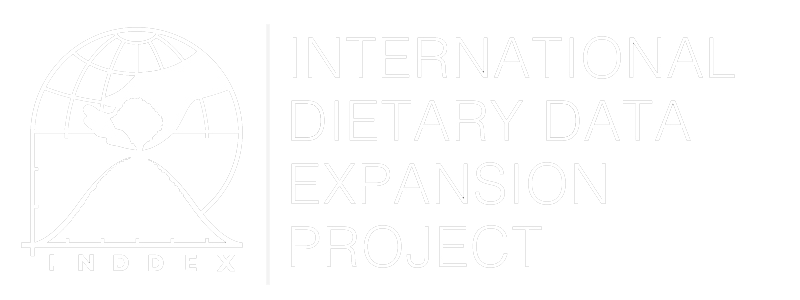Summary
To date, individual food consumption data are largely underutilized due to poor dissemination and lack of harmonization. The Food and Agriculture Organization (FAO) of the United Nations, supported by the World Health Organization (WHO), has developed the FAO/WHO Global Individual Food consumption data Tool (FAO/WHO GIFT). FAO/WHO GIFT's mission is to make publicly available existing dietary data (i.e. individual quantitative food consumption data) from all countries around the world, collected through both large nationwide surveys and small-scale surveys (Leclercq et al., 2019).
FAO/WHO GIFT focuses on dietary data collected through 24-hour Dietary Recalls or Weighed Food Records. These methods collect detailed information on all foods and beverages consumed by individuals and in which quantities (Gibson, 2005; Baranowski, 2013). This type of dietary data provides important information on the quantity of all foods consumed by different age and sex sub-groups of a study population (Del Gobbo et al., 2015; Coates et al., 2017). Dietary data have the unique benefit of providing the information needed to compute food-based indicators that are suitably disaggregated to address the needs of different population sub-groups, which in turn inform agricultural and food policies and programs at the global, national and sub-national level. In addition, individual-level food consumption microdata are necessary to perform refined dietary exposure assessment in the area of food safety. In other words, only the use of such microdata leads to exposure assessments that are neither unnecessarily conservative, nor put sensitive sub-population groups unduly at risk.
Dietary data included in the FAO/WHO GIFT platform are post-harmonized with the FoodEx2 classification and a description system. FoodEx2 was first developed by the European Food Safety Authority (EFSA) and later scaled up to the global level with the support of FAO and WHO. FoodEx2 eases the comparability of data from different data sources, and the matching of food intake and food composition data or chemical occurrence data.
Data disseminated through the FAO/WHO GIFT platform are aimed at supporting policy-makers, program planners, NGOs, and other stakeholders in taking informed evidence-based decisions at the country, regional, and global level in the area of nutrition and food safety.
FAO/WHO GIFT has three main features:
- Inventory Map: The FAO/WHO GIFT platform displays an inventory, presented in the form of a map, in which existing datasets in each country are shown as dots. Each dataset is documented through a metadata report providing a comprehensive description of the data. The inventory map was developed through a joint effort of the Nutrition and Food Systems Division (ESN) of FAO in partnership with the Global Dietary Database at Tufts University and the Nutrition and Metabolism Section at the International Agency for Research on Cancer (IARC), building on their previous work in this field.
- Ready to use food-based indicators: The FAO/WHO GIFT platform provides high quality and easy to understand food-based indicators in the area of nutrition and food safety. These indicators are presented in the form of infographics to ensure that users with varied levels of scientific literacy can benefit from the data.
- Microdata download: End-users such as food safety, agriculture, and nutrition experts may need access to the harmonized dietary data in order to derive more specific information. FAO/WHO GIFT is the first global database allowing users to download harmonized dietary data in the form of microdata.
Strengths/Weaknesses
Strengths:
- FAO/WHO GIFT is constantly being updated and aims at achieving global coverage
- Suitable for both expert and non-expert users
- All datasets are harmonized with the same food classification and description system (FoodEx2)
- FAO/WHO GIFT allows users to download microdata free of charge for further analysis
Weaknesses
- Some of the datasets available in the platform are small scale datasets which are representative of a very limited geographical area (sometimes a village)
- Datasets from different countries or areas, although post-harmonized, were collected following different methodological protocols and hence are not fully comparable
